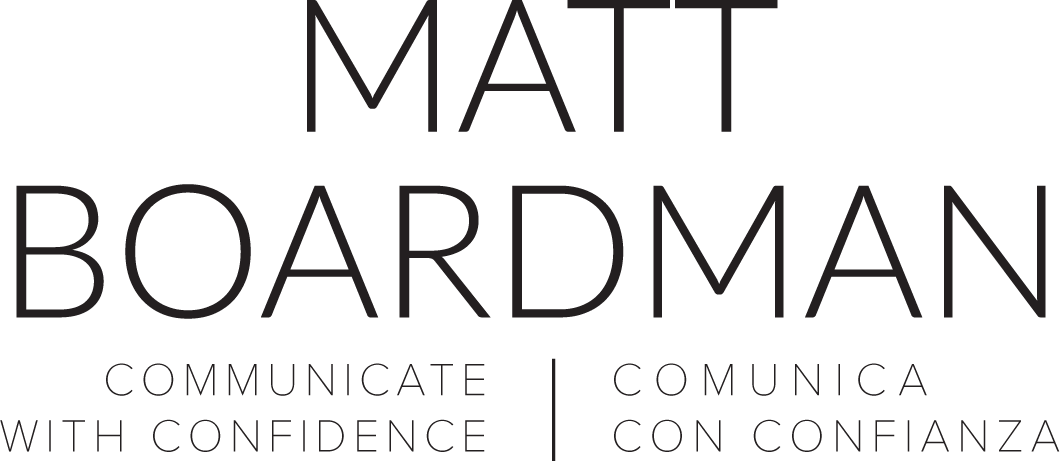Just like a business presentation or pitch, crafting good stand-up comedy requires precision. This blog post will show you how playing with the word order in your presentation can give you a powerful tool to maximise both humour and emphasis.
On the stand-up comedy stage, delivery is vital to creating humour. But, partly because the time allowed for each act is so short (5 minutes is the norm for most amateur gigs), the structure of the content is equally important. The ability to create suspense before a punch line relies a huge amount on the careful placing of each word.
Presenting punch lines
Let’s take an example from one of the first stand-up comedians: Socrates.
“By all means, marry. If you get a good wife, you’ll become happy; if you get a bad one, you’ll become a philosopher.”
Like too many of today’s stand-up comedians, Socrates’ humour relied on a dose of misogyny. But it also resulted from careful word order.
Comedy often comes from setting up tension (uncertainty about what will happen if you get a bad wife) and releasing it after a long period of suspense by revealing the punch line, which is often an unexpected twist ( “a philosopher”). The punch line is placed very deliberately at the end of the sentence. This gives the audience the maximum possible suspense between the set-up statement and the punch line, increasing the impact of the release of tension, and with it the probability that they will laugh.
Let’s reduce the impact of the punch line by changing the word order:
“You’ll become happy if you get a good wife; you´ll become a philosopher if you get a bad one.”
It´s still funny (and misogynist), but the time in which the audience is kept in suspense is shorter. The release of tension is therefore less dramatic as they already know the unexpected twist four words into the second clause.
Let’s take a second example, from Wilson Mizner:
“If you steal from one author, it’s plagiarism; if you steal from many, it’s research.”
The unexpected twist that will trigger laughter is “it’s research”. Putting it at the end of the sentence gives the longest possible suspense and anticipation, which increases the humour overall.
I believe humour can, and should, play a role in many forms of presentation or pitch, including those in the business world. However, word order is useful outside of humour too. You can also manipulate word order to emphasise or de-emphasise your presentation’s key messages.
Emphasising your presentation
Even when it isn’t a punch line releasing tension for comic effect, you create a powerful effect when you end a sentence with your key message. Because it is the last word your audience hears, it is the word that will linger the longest in their mind.
The same technique can de-emphasise part of the message if you want to highlight something more positive.
Take this example from Barack Obama in his re-election speech in late 2012:
“The freedom which so many Americans have fought for and died for comes with responsibilities as well as rights.”
Obama’s key message is about responsibilities, which had the potential to cast the speech in a slightly negative tone (responsibilities often mean hard work or difficult choices). But he (or his speech writer!) appears to have softened deliberately the message by ending the sentence instead with “rights”. The point remains that responsibilities are crucial, but the image that stays in the mind of the audience slightly longer is of their rights, which are a universally positive notion.
Word order is just as crucial as ending on a high to both comedy sketches and professional presentations. Whether you want to create humour or add emphasis, think carefully about which words you position last. It will help you much more powerfully communicate to your audience your key message about marriage. Which is hopefully more progressive than Socrates’.
Do you know a comedian or speaker who manipulates word order powerfully? Let me know in the comments below.

